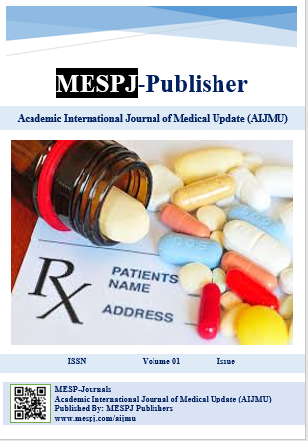Latest
- Academic International Journal of Medical Update (AIJMU)
- Open Access Peer Reviewed Journal
- Academic International Journal of Medical Update (AIJMU)
- Open Access Peer Reviewed Journal
- Academic International Journal of Medical Update (AIJMU)
- Open Access Peer Reviewed Journal
- Academic International Journal of Medical Update (AIJMU)
- Open Access Peer Reviewed Journal
Menu
Visitors






Academic International Journal of Medical Update (AIJMU)
2022; Volume 01 Issue 02
Title
A Case-Control Study assessing Serum Galectin 3 level in Atrial Fibrillation Patients

